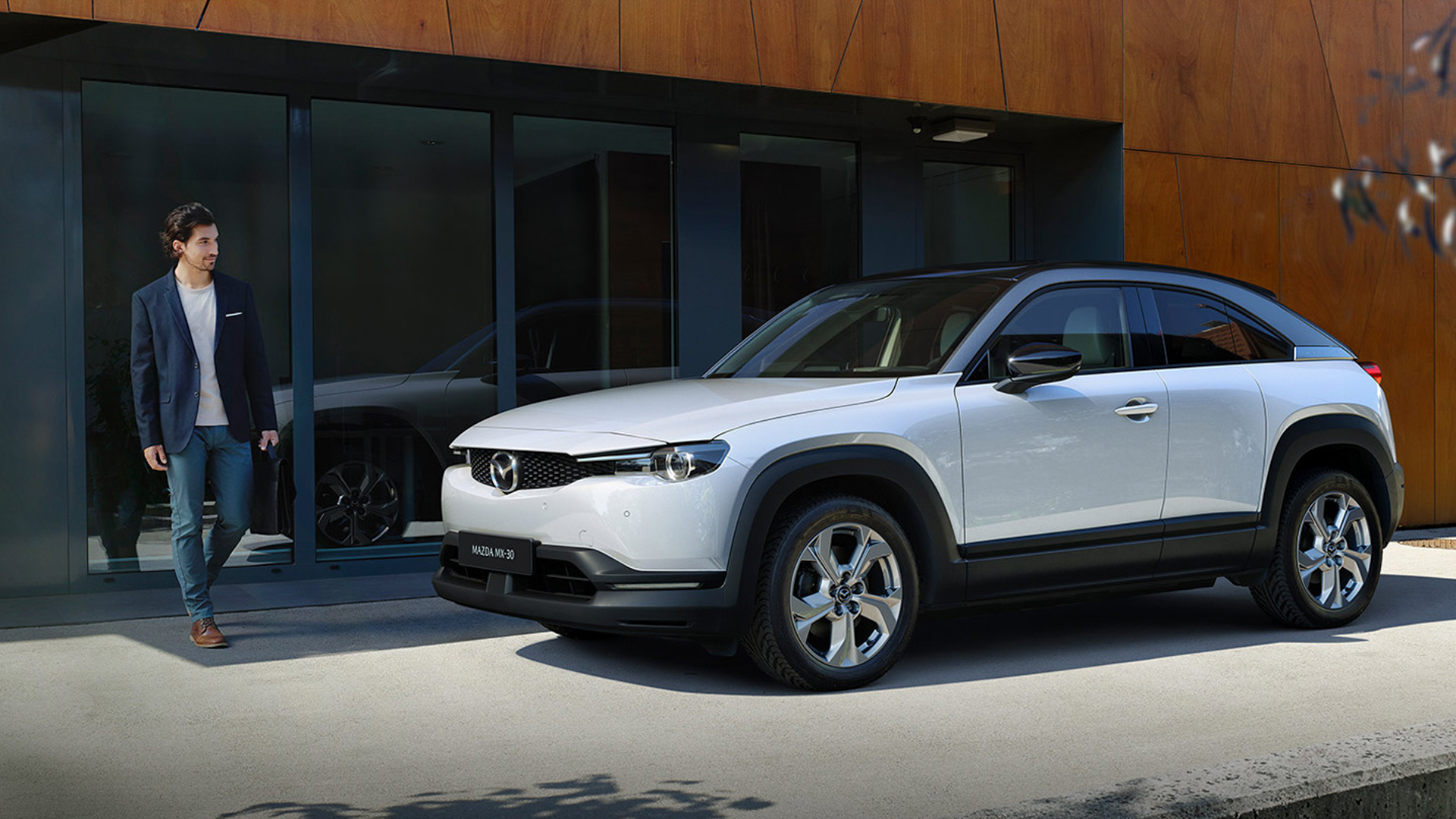

Mazda’s only attempt at an electric vehicle in the United States market—the Mazda MX-30 crossover—wasn’t exactly a smashing success. Between January and August of 2023, Mazda only sold 100 MX-30s in the U.S., which was down 69% from the previous year. However, that lack of success isn’t completely deterring Mazda from trying again, as the Japanese brand could be back with EVs in the U.S. as early as 2025, according to Nikkei Asia.
There’s no official word on what sort of EVs Mazda will sell first but they will reportedly be built on existing car platforms and most likely be SUVs.

“It’s hard to make money by making small EVs given the high costs of producing automobiles,” said Mazda CEO Masahiro Moro in a recent interview. “We are looking at a segment that will appeal to would-be EV buyers.” If Mazda is looking at U.S. EV buyers, then it will need SUVs to appeal to them.
Regardless of what the next batch of Mazda EVs looks like, they won’t be eligible for $7,500 federal tax credits here in the U.S. For EVs to qualify for that tax credit, per the new Inflation Reduction Act rules, final assembly needs to be done in North America. However, Mazda’s next batch of EVs will be built in its Hofu, Japan plant. That lack of tax incentive could hurt Mazda’s future sales, versus its domestic competitors whose customers will get tax breaks.

The plan to keep its new EVs on existing gasoline car platforms is an interesting one, given that many of its rivals are switching to pure electric platforms, such as GM, Volkswagen, and Honda (which is admittedly using GM’s Ultium platform). Dedicated electric platforms are typically lighter, feature better interior dimensions, and allow for more interesting, more aerodynamic designs.
EVs only made up 1% of Mazda’s global sales last year but it will need the U.S. market to bump those numbers up. Mazda wants EV sales to make up at least 25% of its global sales and the U.S. is its biggest single market, with almost 30% of its global sales. However, if it wants Americans to buy EVs, Mazda will need to make one with more than 100 miles of range.
Got tips? Send ’em to tips@thedrive.com